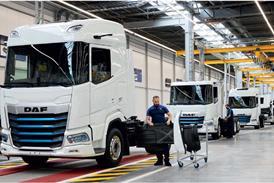Road transport rates have hardly moved over the last three years, provisional new data from the Office for National Statistics (ONS) has shown.
According to the ONS’s latest Services Producer Price Indices, rates for freight transport by road at the end of 2014 were no higher than at the end of Q1 2013, with the index for the sector in both cases standing at 104.8 – only fractionally higher than at the beginning of 2012 when the index was at 104.4.
From the beginning of 2013, the index for haulage actually dipped, falling to 104.2 at the end of Q4 that year before rising back up to 104.9 in Q3 2014.
Rail freight rates have fared only slightly better over the last three years, with the index for that sector rising from 104.1 at the end of Q1 2012 to 105.9 at the end of 2014. The index for warehousing and storage, meanwhile, showed a slight drop in rates over the period, from 108.0 at the end of Q1 2012 to 106.5 at the end of Q4 2014.
Karen Dee, director of policy at the FTA, said the road transport figures were not a surprise. “In our most recent Quarterly Transport Activity Survey [for the year to 1 January], we found an average rate of growth [in rates] of about 1.6%. There was a bit of an increase in 2013 when the economy picked up more quickly than people were expecting, but that fell back in 2014 when that growth wasn’t sustained in the wider economy.”
The impact of stagnating rates has been offset by falling costs over the last year, admitted Dee, though in many cases, the benefit of falling costs has been claimed by the customer, she said.
“What we’ve found is that with continuing freezes in fuel duty and the barrel price of oil falling, operating costs [for a typical 44-tonne vehicle] fell about 5% overall in 2014,” said Dee. “Costs are very visibly being reduced and that means customers are asking for those costs to be passed on through the economy.”
Dee also warned that the ongoing skills shortage could start to tip the balance of costs back the other way in coming months. “It might feed through in terms of pay rates, for example. Businesses are having to think more innovatively about how they manage that.”
















